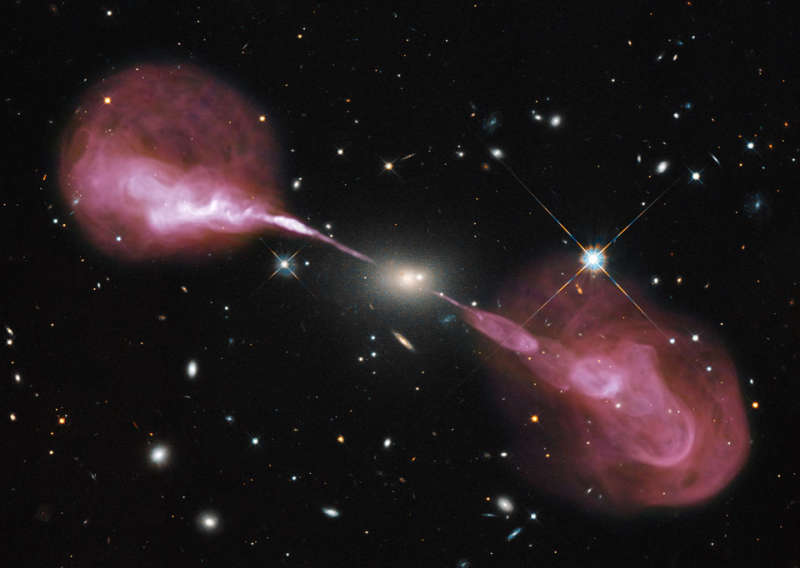
|
Credit & Copyright: NASA,
ESA,
S. Baum &
C. O'Dea
(RIT),
R. Perley and
W. Cotton
(NRAO/AUI/NSF),
and the Hubble Heritage Team (STScI/AURA)
Explanation:
Why does this galaxy emit such spectacular jets?
No one is sure, but it is likely related to an active supermassive black hole at
its center.
The galaxy at the
image center,
Hercules A, appears to be a relatively normal
elliptical galaxy in
visible light.
When imaged in
radio waves,
however, tremendous
plasma
jets over one million light years long appear.
Detailed analyses indicate that the central galaxy, also known as
3C 348,
is actually over 1,000 times more massive than our Milky Way Galaxy,
and the central black hole is nearly 1,000 times more massive than the
black hole at our
Milky Way's center.
Pictured
above
is a visible light image obtained by the Earth-orbiting
Hubble Space
Telescope
superposed with a radio image taken by the recently upgraded
Very Large Array (VLA) of radio telescopes
in
New Mexico,
USA.
The physics that creates
the jets remains a topic of
research with a likely energy source being infalling matter
swirling toward the central
black
hole.
and the Hubble Heritage Team (STScI/AURA)
Follow APOD on:
Facebook
(Daily)
(Sky)
(Spanish)
or Google Plus
(Daily)
(River)
|
January February March April May June July August September October November December |
| |||||||||||||||||||||||||||||||||||||||||||||||||||||||
NASA Web Site Statements, Warnings, and Disclaimers
NASA Official: Jay Norris. Specific rights apply.
A service of: LHEA at NASA / GSFC
& Michigan Tech. U.
Based on Astronomy Picture
Of the Day
Publications with keywords: active galaxy - radio galaxy - radio jets
Publications with words: active galaxy - radio galaxy - radio jets
See also:
